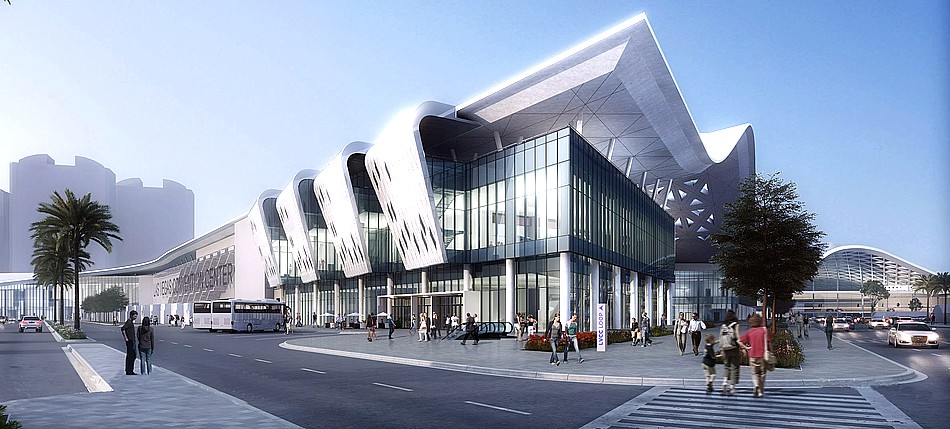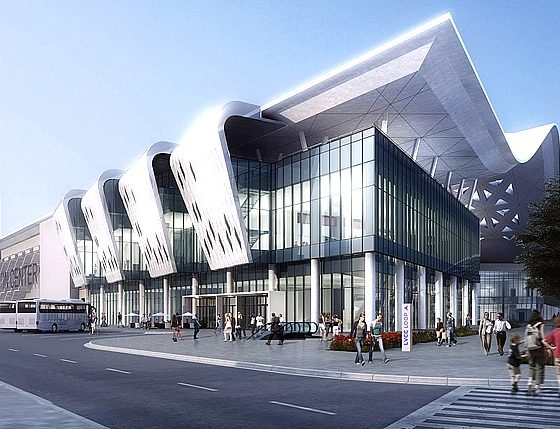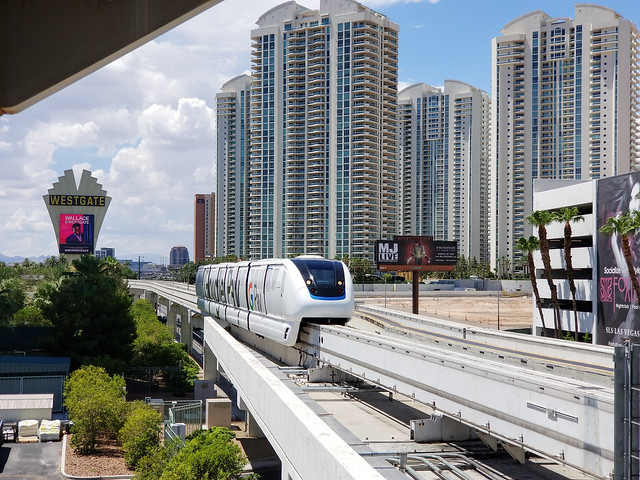

News
The Boring Company’s Las Vegas transport tunnel meets skepticism from Monorail officials
The Boring Company’s Las Vegas tunnel project is no stranger to struggle, and it appears that trend continues even after the company won its current contract with the city. Las Vegas Monorail officials recently voiced concerns over the engineering safety in areas where the two systems will intersect underground and lobbied for more oversight of the Elon Musk-led venture. Despite Boring’s objections, the Winchester Town Board which oversees the new tunnel project agreed to require regular coordination between The Boring Company, the Monorail officials, and Las Vegas’s Public Works department.
“The proposed underground people mover system intersects our existing system route, and it appears the presented tunnel alignment interferes with our existing columns for the Las Vegas Monorail system and creates significant concern regarding both vertical and lateral loads,” Curtis Myles, CEO of the Las Vegas Monorail, claimed in a letter to Clark County planning officials in June.
“When you have columns that would be this close, you’re not just concerned about contact with the columns, you’re also concerned about vibration,” a lawyer representing the Monorail clarified later. “The record has to be absolutely clear, if there’s any damage at all to the columns, it will shut the Monorail down.”


Jane Labanowski, The Boring Company’s government relations executive, objected to Myles’s concerns. “Noise and vibration [from tunneling] are imperceptible at the surface. We design our process to be deep enough underground such that a person walking [on the surface] creates more vibration than our tunnel-boring machine underground.”
The chairperson of the Winchester Town Board cited precautionary reasons for the new coordination requirements. “That way we all have a point of reference to go back to, just in case somebody forgets or doesn’t check in with other people…All of a sudden, someone gets to be a bad actor who doesn’t mean to be,” the chairperson is quoted as saying at the Board meeting where the recent decision was made. With construction plans finally approved, The Boring Company must now pursue permits to begin digging.
The board members of the Las Vegas Convention and Visitors Authority (LCVA) approved a $48.6 million contract with The Boring Company in May this year to build a transport tunnel under the the LCVA campus. The project will comprise one pedestrian tunnel and two vehicle tunnels connecting the campus’ New Exhibit Hall to the existing North/Central Hall. Construction is expected to be completed in time for the 2021 Consumer Electronics Show (CES), and according to a contractor with oversight of the Boring project, public access will be limited to the tunnels during the CES event. “During CES it will be a little more difficult to have the public coming in and out than it would be for a [smaller] trade show,” the contractor said during the Board meeting.
To transport Las Vegas tunnel passengers, The Boring Company plans to use modified Tesla Model X and Model 3 vehicles which will carry up to 16 passengers each with both sitting and standing room. The cars will have autonomous operation, although a human driver will also be present as a safety precaution. Boring has estimated the system will be capable of transporting up to 4,400 passengers per hour.
This latest regulatory hurdle is only the latest that The Boring Company has encountered while pursuing the Las Vegas tunnel project. Earlier this year, LCVA board members Michele Fiore and Carolyn Goodman argued against the Boring Company’s project proposal, citing the startup’s inexperience and suggesting that the proposal from Austria-based Doppelmayr Garaventa Group be embraced instead. Doppelmayr’s proposal involved an above-ground transit system that would cost around $215 million to complete.

Elon Musk
Elon Musk confirms xAI’s purchase of five 380 MW natural gas turbines
The deal, which was confirmed by Musk on X, highlights xAI’s effort to aggressively scale its operations.

xAI, Elon Musk’s artificial intelligence startup, has purchased five additional 380 MW natural gas turbines from South Korea’s Doosan Enerbility to power its growing supercomputer clusters.
The deal, which was confirmed by Musk on X, highlights xAI’s effort to aggressively scale its operations.
xAI’s turbine deal details
News of xAI’s new turbines was shared on social media platform X, with user @SemiAnalysis_ stating that the turbines were produced by South Korea’s Doosan Enerbility. As noted in an Asian Business Daily report, Doosan Enerbility announced last October that it signed a contract to supply two 380 MW gas turbines for a major U.S. tech company. Doosan later noted in December that it secured an order for three more 380 MW gas turbines.
As per the X user, the gas turbines would power an additional 600,000+ GB200 NVL72 equivalent size cluster. This should make xAI’s facilities among the largest in the world. In a reply, Elon Musk confirmed that xAI did purchase the turbines. “True,” Musk wrote in a post on X.
xAI’s ambitions
Recent reports have indicated that xAI closed an upsized $20 billion Series E funding round, exceeding the initial $15 billion target to fuel rapid infrastructure scaling and AI product development. The funding, as per the AI startup, “will accelerate our world-leading infrastructure buildout, enable the rapid development and deployment of transformative AI products.”
The company also teased the rollout of its upcoming frontier AI model. “Looking ahead, Grok 5 is currently in training, and we are focused on launching innovative new consumer and enterprise products that harness the power of Grok, Colossus, and 𝕏 to transform how we live, work, and play,” xAI wrote in a post on its website.
Elon Musk
Elon Musk’s xAI closes upsized $20B Series E funding round
xAI announced the investment round in a post on its official website.

xAI has closed an upsized $20 billion Series E funding round, exceeding the initial $15 billion target to fuel rapid infrastructure scaling and AI product development.
xAI announced the investment round in a post on its official website.
A $20 billion Series E round
As noted by the artificial intelligence startup in its post, the Series E funding round attracted a diverse group of investors, including Valor Equity Partners, Stepstone Group, Fidelity Management & Research Company, Qatar Investment Authority, MGX, and Baron Capital Group, among others.
Strategic partners NVIDIA and Cisco Investments also continued support for building the world’s largest GPU clusters.
As xAI stated, “This financing will accelerate our world-leading infrastructure buildout, enable the rapid development and deployment of transformative AI products reaching billions of users, and fuel groundbreaking research advancing xAI’s core mission: Understanding the Universe.”
xAI’s core mission
Th Series E funding builds on xAI’s previous rounds, powering Grok advancements and massive compute expansions like the Memphis supercluster. The upsized demand reflects growing recognition of xAI’s potential in frontier AI.
xAI also highlighted several of its breakthroughs in 2025, from the buildout of Colossus I and II, which ended with over 1 million H100 GPU equivalents, and the rollout of the Grok 4 Series, Grok Voice, and Grok Imagine, among others. The company also confirmed that work is already underway to train the flagship large language model’s next iteration, Grok 5.
“Looking ahead, Grok 5 is currently in training, and we are focused on launching innovative new consumer and enterprise products that harness the power of Grok, Colossus, and 𝕏 to transform how we live, work, and play,” xAI wrote.
Investor's Corner
Tesla gets price target bump, citing growing lead in self-driving

Tesla (NASDAQ: TSLA) stock received a price target update from Pierre Ferragu of Wall Street firm New Street Research, citing the company’s growing lead in self-driving and autonomy.
On Tuesday, Ferragu bumped his price target from $520 to $600, stating that the consensus from the Consumer Electronics Show in Las Vegas was that Tesla’s lead in autonomy has been sustained, is growing, and sits at a multiple-year lead over its competitors.
CES 2026 validates Tesla’s FSD strategy, but there’s a big lag for rivals: analyst
“The signal from Vegas is loud and clear,” the analyst writes. “The industry isn’t catching up to Tesla; it is actively validating Tesla’s strategy…just with a 12-year lag.”
The note shows that the company’s prowess in vehicle autonomy is being solidified by lagging competitors that claim to have the best method. The only problem is that Tesla’s Vision-based approach, which it adopted back in 2022 with the Model 3 and Model Y initially, has been proven to be more effective than competitors’ approach, which utilizes other technology, such as LiDAR and sensors.
Currently, Tesla shares are sitting at around $433, as the company’s stock price closed at $432.96 on Tuesday afternoon.
Ferragu’s consensus on Tesla shares echoes that of other Wall Street analysts who are bullish on the company’s stock and position within the AI, autonomy, and robotics sector.
Dan Ives of Wedbush wrote in a note in mid-December that he anticipates Tesla having a massive 2026, and could reach a $3 trillion valuation this year, especially with the “AI chapter” taking hold of the narrative at the company.
Ives also said that the big step in the right direction for Tesla will be initiating production of the Cybercab, as well as expanding on the Robotaxi program through the next 12 months:
“…as full-scale volume production begins with the autonomous and robotics roadmap…The company has started to test the all-important Cybercab in Austin over the past few weeks, which is an incremental step towards launching in 2026 with important volume production of Cybercabs starting in April/May, which remains the golden goose in unlocking TSLA’s AI valuation.”
Tesla analyst breaks down delivery report: ‘A step in the right direction’
Tesla has transitioned from an automaker to a full-fledged AI company, and its Robotaxi and Cybercab programs, fueled by the Full Self-Driving suite, are leading the charge moving forward. In 2026, there are major goals the company has outlined. The first is removing Safety Drivers from vehicles in Austin, Texas, one of the areas where it operates a ride-hailing service within the U.S.
Ultimately, Tesla will aim to launch a Level 5 autonomy suite to the public in the coming years.








